Mold and broken floor due to flooding in library warehouse
The library warehouse was damaged by a flood at the end of December. Due to this, there is mold in the books and the floor is broken and needs to be replaced. The collection will have to be relocated temporarily. Total costs are more than a hundred thousand euros.
The library warehouse has 6,500 meters of shelf space, of which at least 150 meters were damaged beyond repair. The good thing is that no unique TU/e materials were lost. However, the wooden subfloor got bent out of shape in some places, which means it must be replaced. To avoid future flooding, external water pumps were installed. Security guards will also make extra rounds of the warehouse and check whether the gutter is draining the water properly.
Relocation
After the warehouse was found to be damaged, an investigation took place into the mold and air quality. On the back of this, a recommendation was issued to thoroughly clean the warehouse. According to Anouk Seeverens, who’s involved in the renovation plans as a facility account manager at Facility Management, this will be done shortly. “In the meantime, we’ll look for an external party that can help us remove and store the collection during the renovation.”
The new floor of the warehouse, as well as the measures that were already taken to prevent flooding, the upcoming major cleaning, and the temporary relocation of the collection are very costly. The exact extent of the costs remains to be determined, but they will certainly be in excess of a hundred thousand euros. It’s a setback for the university, which actually has to make cutbacks.
Water management
Dirk Bax, involved in the repair work on behalf of Real Estate: “To meet initial needs, we immediately installed pumps to ensure that excess rainwater is properly drained. It is thanks to this intervention that the floor in the space stayed dry afterwards, even during the extremely wet 2024 summer months.”
In August, the mold investigation was completed. The next step is making the warehouse moisture resistant. The plans for this are ready. Bax: “Incidentally, we expect extreme weather will only increase, which is why we are working on sustainable, future-proof water management for the entire university.”
New floor
At first, only the wooden floor of the warehouse will be replaced. Bax expects this to be sufficient. “If it turns out that the new floor, in combination with the pumps, isn’t enough to prevent future damage, we’ll have to look at sealing the floor in the underground bicycle shed, but that will be a next step.”
Librarian John Engels manages the warehouse. He hopes the plans won’t remain limited to replacing the floor in the warehouse and the recently installed external pumps. “If a huge amount of water enters all at once, there’s no way those pumps will be able to deal with all of it. So that’s why we’re hoping the bicycle shed will be sealed.”
Waterfall
When Engels arrived in the warehouse on the day of the flood, the water at the emergency exit was a few centimeters high. “It came from the bicycle shed above, down through the emergency exit.” Engels has worked at TU/e for almost forty years, during which time the warehouse was affected by flooding on several occasions. “But I’ve never seen it this bad. It came down like a waterfall.”
The TU/e archives consist of books, readers, theses, lecture notes, and scientific journals. They’re stored in roller cabinets, each of which provides 88 meters of shelf space. On the floor and at the bottom of the cabinets, you can still see brown spots where the water used to be. The mold is mostly on the upper shelves, as the water didn’t only come from below, but also from the ceiling above. This is due to cracks in the underground bicycle shed floor, which were caused by the latest renovation of Atlas. In some places the metal cabinets have become dislocated due to the water, under the pressure of the expanding wet paper.
Invisible
However, the flooding wasn’t limited to the emergency exit and the ceiling. The water also came through the walls. This is something that has happened in the warehouse on previous occasions, as the TU/e premises are located on marshy ground.
Such a leak isn’t always very visible, says Engels. “For instance, the water also ran down through a hole in the wall at the back of the cabinets, ending up underneath them. That was so frustrating, because we didn’t see it. We only found out when a rolling cabinet didn’t open anymore due to the damaged floor.”
Don’t judge a book by its cover
After the flood, the moisture was extracted from the warehouse using blowers. Books and journals that had visible mold were thrown out or ‘decollected’, as Engels calls it. “It’s now ten months later and we’re still finding polluted books.”
In a blue crate in the warehouse, there are copies with some gray-black stains at the bottom of the cover, which may just as well have been a layer of dust. Engels: “When you look at a book like that, you don’t see it, but when you pick it up, there is mold in the middle. Or you can't even open it because it has simply become an unreadable, dry mess.”
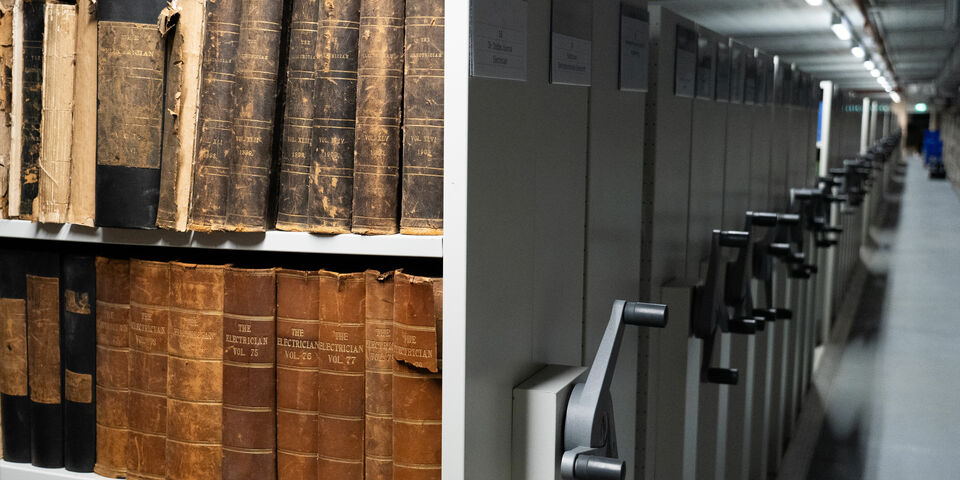

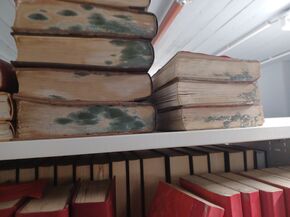
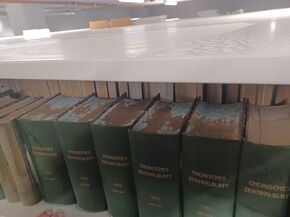
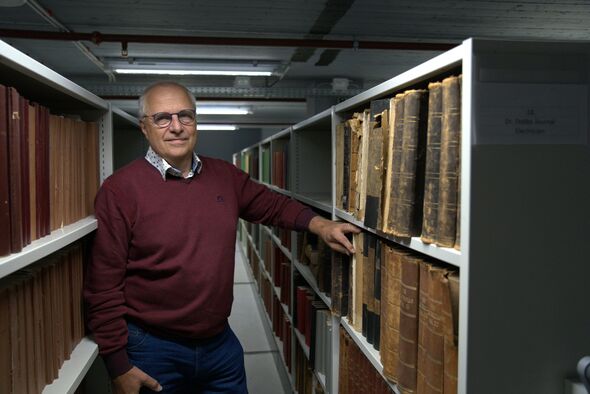
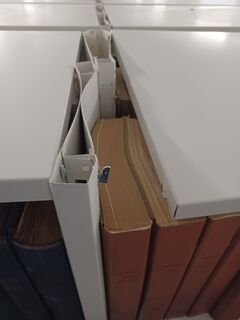
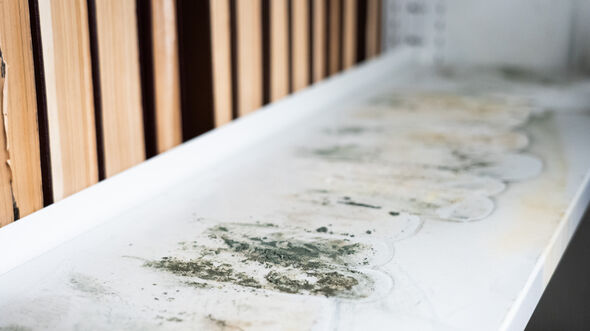
Discussion